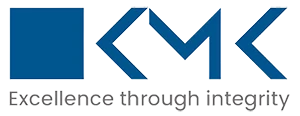Project-Based Accounting: A Financial Lens for Precision-Driven Businesses

Project-based accounting allows businesses to manage revenue, costs, and profitability on a project-by-project basis—empowering them to monitor financial health with more granularity than traditional accounting. Whether you’re a construction firm, SAAS company or a software development company, this method ensures you stay in control ofcontrol your budgets and margins throughout each project lifecycle. It‘s a powerful tool in today‘s fast-paced business world, where visibility and precision can determine long-term success. At KMK, we support this shift by helping organizations implement, manage, and optimize project-based accounting systems tailored to their operations.
Understanding Project-Based Accounting:
Project–based accounting is influenced by the matching concept. It focuses on the financial performance of each individual business project along with the overall company‘s financial health. It treats projects like mini-businesses, and tracks their revenue and cost. This helps to flag loss–making projects from the overall business. In today‘s fast-paced business world, understanding where your money is going—project by project—can make or break your profitability. Project-based accounting helps prevent costly mistakes by closely monitoring each project’s financial performance.
Who Should Use Project-Based Accounting?
This approach is beneficial for:
- Construction companies managing multiple job sites
- Marketing agencies running multiple campaigns
- Consultants working on fixed contracts
- Tech companies developing multiple custom software
- Creative studios juggling several client projects
- Investment companies investing in multiple funds
- If your business runs on individual projects, this method is for you.
Project-based accounting is useful when the business consists of various complex jobs and their specific costs are aligned. These jobs have different time frames and budgets, which depends on their complexity. The time duration required to accomplish this job or project is known as the project life cycle. The projects may be completed in months or years. They need close financials monitoring during their project life cycle.
This method is essential for businesses that:
- Work on multiple contracts or projects at once.
- Need to evaluate the profitability of each job or engagement.
- Want to control budgets and ensure proper resource allocation.
Key Components of Project-Based Accounting
Here‘s what sets it apart from general accounting:
- Project Budgets: Every project starts with a forecast: how much will it cost? What‘s the expected revenue? These budgets guide decisions and spending limits throughout the project lifecycle.
- Dedicated Cost Tracking: You track all costs—labour, materials, software, subcontractors—directly to the project, instead of dumping everything into a single company expense account.
- Revenue Allocation: Every payment or invoice tied to a project is logged against that specific job, making it easy to track what‘s been billed and what‘s still outstanding.
- Profitability Reporting: At any point, you can pull a report to see:
- How much the project has earned
- How much it has spent
- The current profit or loss
- This gives you real-time visibility into performance.
Benefits of Project-Based Accounting
- Transparency: See which projects are exactly profitable
- Better Budgeting: Stay on top of project costs in real–time
- Accurate Billing: Bill clients based on actual work and expenses
- Stronger Reports: Impress stakeholders with detailed financials
- Smarter Decisions: Focus on projects that deliver the best return
Common Challenges
- Requires disciplined tracking and accurate data entry
- It can be complex without the right accounting software
- Needs collaboration between accounting and project managers
Popular Tools That Support Project-Based Accounting
- QuickBooks Online with Projects
- Zoho Books
- FreshBooks
- Sage Intacct
- Microsoft Dynamics 365
- Oracle NetSuite
Comparison between traditional and project–based accounting:
|
Comparison |
Traditional Accounting |
Project-Based Accounting |
|
Focus of Financial Tracking |
Tracks income and expenses at the company level. —a big-picture view of business performance. |
Tracks income, expenses, and time at the individual project level —zoomed-in view of project performance. |
|
Use Case |
Best for businesses with routine operations (e.g., retail, manufacturing). Focuses on general profit/loss and operational health. |
Designed for project-driven businesses (e.g., construction, agencies, consulting). Focuses on profitability and performance per project. |
|
Budgeting & Cost Allocation |
Costs are categorized by department or expense type (e.g., rent, salaries). —limited ability to track profitability by client or project. |
Costs are directly tied to individual projects. Enables budgeting, forecasting, and profitability analysis per project. |
|
Time & Labor Tracking |
Labor is often tracked as a general payroll expense. It is hard to see which employees or teams are most productive. |
Labor is allocated to specific projects and tasks. Helps track billable hours, productivity, and efficiency by project. |
|
Reporting |
Generates standard financial reports (P&L, balance sheet, cash flow). —less detail for decision-making on a project level. |
Generates project-specific reports (P&L by project, budget vs actual, WIP reports). Offers granular insight into project management and profitability. |
Read Also: Top 5 Hidden Costs of Inhouse Accounting and How Outsourced Services Can Help
Reports used in Project Based Accounting:
- Project Profit and Loss Report (P&L) It shows:
- Revenue earned from the project
- Direct costs (materials, labor, subcontractors)
- Indirect costs (shared expenses, overhead allocation)
- Net profit or loss for the project
- Budget vs. Actual Report It shows:
- Original budgeted costs and revenues
- Actual costs incurred and revenues earned
- Variance (difference between budget and actual)
- Job Costing Report It shows:
- Detailed breakdown of costs assigned to a project
- Labor hours and rates
- Material costs
- Equipment usage
- Overhead allocation
- Time Tracking Report It shows:
- Hours worked on each project
- Employee or contractor timesheets
- Billable vs. non-billable time
- Work-in-Progress (WIP) Report It shows:
- Percentage of project completion
- Costs incurred to date
- Revenue recognized (especially important for long-term projects)
- Invoice and Billing Report It shows:
- All invoices sent per project
- Payment status (paid, pending, overdue)
- Remaining balance or retainer
- Project Summary Report (Dashboard Style) It shows:
- A high-level overview of all key metrics:
- Revenue to date
- Costs to date
- Profit margin
- Completion % and timeline status
How KMK Can Help
KMK specializes in outsourced accounting support for project-based businesses across industries. Our teams help set up project-based accounting systems, monitor each project’s financial health, and generate detailed custom reports that enable proactive decision-making. With experience across platforms like QuickBooks, Xero, and NetSuite, KMK ensures accurate job costing, streamlined billing, and complete visibility into the performance of every engagement.
Final Thoughts
Traditional Accounting is like looking at your whole business from a bird‘s eye view. Project-Based Accounting is like zooming in with a magnifying glass to see how each project is doing. Project-based accounting can seem daunting at first, but its clarity is well worth it. By focusing on financials at the project level, businesses can improve profitability, control costs, and make smarter decisions with confidence. At KMK, we help businesses adopt this approach efficiently and effectively—transforming complex project data into clear, actionable financial insight.

Chetna Chanchlani is a Chartered Accountant with experience of US accounting and taxation. She has been associated with KMK for more than five years and has handled diversified clients of accounting and tax. Currently, she is an Associate Vice President and is handling onboarding of new clients. She understands the business models of clients and their requirements from accounting, reporting and taxation perspective. She plays a vital role in landing the client smoothly in our organisation and checks periodically on them. Outside work, Chetna loves music, dance and explore new places with family and friends.
Let’s Take Our Conversation Ahead
KMK is a top outsourced accounting and tax service provider. We offer end-to-end accounting and tax services for small to mid-sized businesses, with a team of 875+ professionals, including certified public, chartered, and staff accountants.
USA:
651 N Broad St Suite 205, Middletown, DE 19709, USA
Phone: 310-362-2511
India:
300, Sankalp Square-3B
Sindhu Bhavan Marg,
Ahmedabad, Gujarat 380058
For Career: 91-98240-42996
Developed by Bluele | Copyright © 2025 | KMK Ventures Private Limited. | All Rights Reserved


